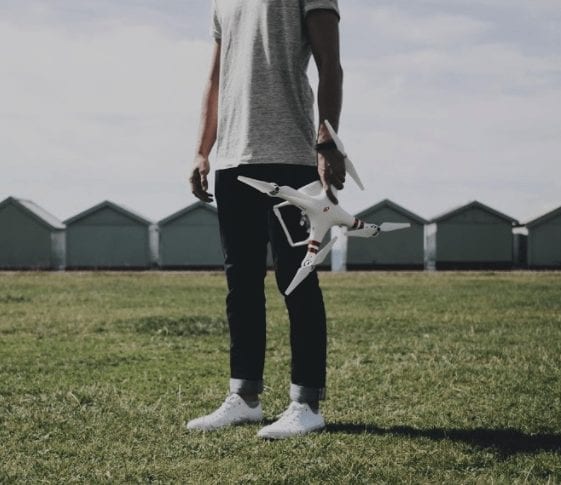One of the most common questions asked by people interested in the drone and unmanned aerial vehicle (UAV) industry is: Where can I fly a drone?
It’s a very sensible question, given that aviation laws are not really something to be take lightly in Australia and fines can be pretty hefty. So we thought we’d help out by clarifying where you are allowed to fly your UAV/drone and how to remain a safe and law-abiding citizen when flying.
Commercial pilot or plain old hobbyist?
First of all, it’s important to understand that there is a difference to the regulations on where you are allowed to fly based on pilot classification.
In the majority of cases, the simplest way to know which category you fall into depends on whether or not someone is paying you for your drone flying.
If they are, you are most likely a commercial pilot.
If you are not being paid to fly, it’s safe to say you are a hobby pilot.
Where can I fly a drone as a non-commercial pilot?
Drone or Remotely Piloted Aircraft Vehicle (RPAS) flying is becoming increasingly popular, and the regulations are slowly moving toward reflecting that. Currently hobby pilots can fly without an official certification, provided they adhere to the following regulations:
- You must be able to see your drone at all times. This means an uninterrupted line of sight at any point during the flight.
- No night flying.
- Your UAV (drone) must remain under 400 ft (Approx 120 metres) at all times.
- You must not fly within 30 metres of another person with your RPA (remotely piloted aircraft) at any time.
- Under no circumstances are you to operate your drone within 5.5km of an airport, or any place where aircraft are taking off or landing.
- Never fly an kind of unmanned aerial vehicle (UAV) near a fire or other kind of natural disaster or accident. You may be inadvertently preventing rescue teams and aircraft from being able to access the area and provide assistance to those in need.
- You can only fly one RPA at a time.
In addition to these laws, as a hobbyist you are also not permitted to fly over a populous area. It can be a little difficult to quantify exactly what a “populous area” is, as it currently a risk-based assessment based on the location.
Where can I fly drones as a commercial pilot?
Drone pilots are in hot demand across a range of industries, including entertainment, real estate, surveying and mapping. Businesses require a commercial Operator’s Certificate to ensure safe protocols and safety procedures are adhered to. The pilot’s themselves require a Remote Pilot License to work for a certified company.
Commercial pilots will have a lot more freedom with where they are allowed to fly, including at night and above the 400ft restrictions that hobby pilots must adhere to.
The sub 2kg rule
This is an interesting development in the classification of UAV flying, with CASA essentially stripping back regulations for commercial drone pilots that are operating UAVs under 2kg in total weight.
Since September 2016, pilot’s do not require a Remote Pilot License to operate these lightweight drones for commercial purposes.
This could have an impact on the industry structure in general, as real estate firms and other similar businesses would no longer need to engage a licensed third party to pilot small drones for land fly-overs.
Of course, all pilots will still need to adhere to the existing CASA laws. The regulations and laws surrounding where you are allowed to fly your drone are in place for one reason – safety. With the potential for disaster quite high when it comes to airborne machinery, it is essential that you always stay informed.
Sign up to our mailing list and we can send you a free information pack to help you navigate the skies with ease!
